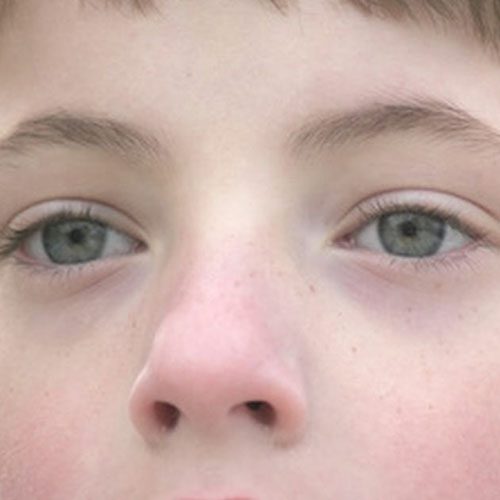Nasal injuries
Nasal injuries can result in damage to the skin, bone, cartilage or any combination.
If the skin is cut this requires cleaning and then closing using either sutures or self adhesive strips. An injection to prevent tetanus is advisable if your vaccination is not up to date (every 10 years).
Bony fractures of the nose account for nearly 50% of all facial fractures. Fractures to the nasal bones cause a lot of swelling and it may take about five days for the swelling to settle down enough for the bones to be checked.
Your family doctor or the accident and emergency department should check your nose to exclude a septal haematoma (see below). They will often ask an ear nose and throat surgeon to check your nose seven to 10 days after the injury to see if the bones and cartilage need more treatment.
Treatment
X-rays do not contribute to the clinical management of nasal fractures, as the majority are simple and uncomplicated. Only when more serious injuries have taken place are they important and should include the skull and face.
Most of the time when the swelling has settled down and there is either no or little change in the shape of the nose.
If the nose is deformed after the swelling has subsided (five to seven days after the injury), manipulation under anaesthesia can take place. Manipulation must take place before 14 days after the injury and the patient made aware that the deformity may not be corrected completely. Any residual deformity even after manipulation may require more surgery 12 months or more after the injury.
Complications
SEPTAL HAEMATOMABlood collecting (haematoma) under the lining (mucosa) of the central partition wall of the nose (septum) is stripped off either side causing a purple swelling inside the nose. If this occurs it will give you nasal obstruction and pain and need treating by draining the blood away soon after it happened.
If the blood is left and not drained it can become infected or cause damage to the underlying support destroying cartilage and then leave a ‘saddle nose' deformity. (explanation please) Treatment is by surgical drainage and a course of antibiotics.
NASAL OBSTRUCTIONNasal blockage usually occurs after the injury due to swelling inside the nose and this may take a few days to settle. If the nose is still blocked after three weeks it may be due to the septum being deviated and buckled which blocks the nasal passage. Septal deviation may require surgical correction if the blockage is significant.
NOSEBLEEDS (EPISTAXIS)Nosebleeds are common and usually settle on their own with simple first aid by gently pinching the lower half of the nose for 15 minutes. Nasal packing or cautery in hospital is reserved for nosebleeds that do not stop of their own accord.
Rare complications
CEREBROSPINAL FLUID LEAKSevere nasal trauma can push the nasal bones into the face, giving the face a pug-like appearance. The thin cribiform plate at the roof of the nose may fracture causing the cerebrospinal fluid that bathes the brain to leak out.
Small fractures seal spontaneously with conservative management (95% within two weeks). Antibiotics are not given unless infection is proven to be present. If fluid leak continues , more treatment may be required.
LOSS OF SENSE OF SMELL (ANOSMIA)The smell organ in the roof of the nose can also be damaged. Loss of sense of smell very rarely returns.
By Mark Johnston and Nick Jones, Queens Medical Centre, Nottingham
Disclaimer
The details in this section are for general information only. Always check with your own doctor.



